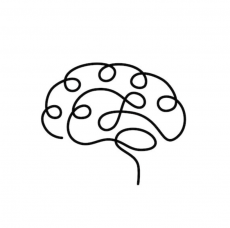Molecules-to-Circuits Psychobiology Lab
Research in my laboratory is characterized by a multidisciplinary and multiscale approach. We combine behavioural, anatomical, molecular and bioinformatics analyses with chemogenetic or optogenetic manipulations of neural activity, with the aim to build a comprehensive understanding of neural circuits in both normal and pathological conditions.
Decoding the neural basis of anxiety: from molecules to neural circuits. Anxiety is an emotional state characterized by anticipatory concern regarding potential future threats or negative outcomes. However, anxiety becomes maladaptive when it is disproportionate to actual risks, producing threat generalization to non-threatening situations and a persistent state of heightened arousal that interferes with daily functioning and well-being. This pathological shift reflects a breakdown in the neural mechanisms that normally balance assessment of perceived risks and potential gains, influencing approach-avoidance behaviours. We study innate and stress-induced anxiety-like behaviours, at both molecular and circuit level, with the long-term goal to identify new therapeutic targets for the prevention or treatments of anxiety disorders. Our current focus is on the functional role of the dorsomedial striatum (DMS) within the neural circuit that regulates anxiety. We study how manipulations of specific afferent and efferent DMS projections influence approach–avoidance behaviours.
Targeting spatial memory circuits in neurodegenerative disorders. Spatial navigation is one of the most common and conserved cognitive functions, as the ability to go from one place to another in a complex environment is essential for the survival of most animals. Spatial memory loss is an early clinical sign of Alzheimer’s disease (AD) and other types of dementia. Despite intensive research efforts, we have not yet developed effective cures for AD, while the number of people affected is increasing steadily. We study the neural circuits involved in different types of spatial memory, to shed light on network dynamics of memory acquisition, consolidation and storage. We are currently investigating whether stimulation of brain regions non-canonical to memory functions and less vulnerable to AD pathology, such as the dorsolateral striatum (DLS), may improve spatial memory deficits in preclinical models of AD.

